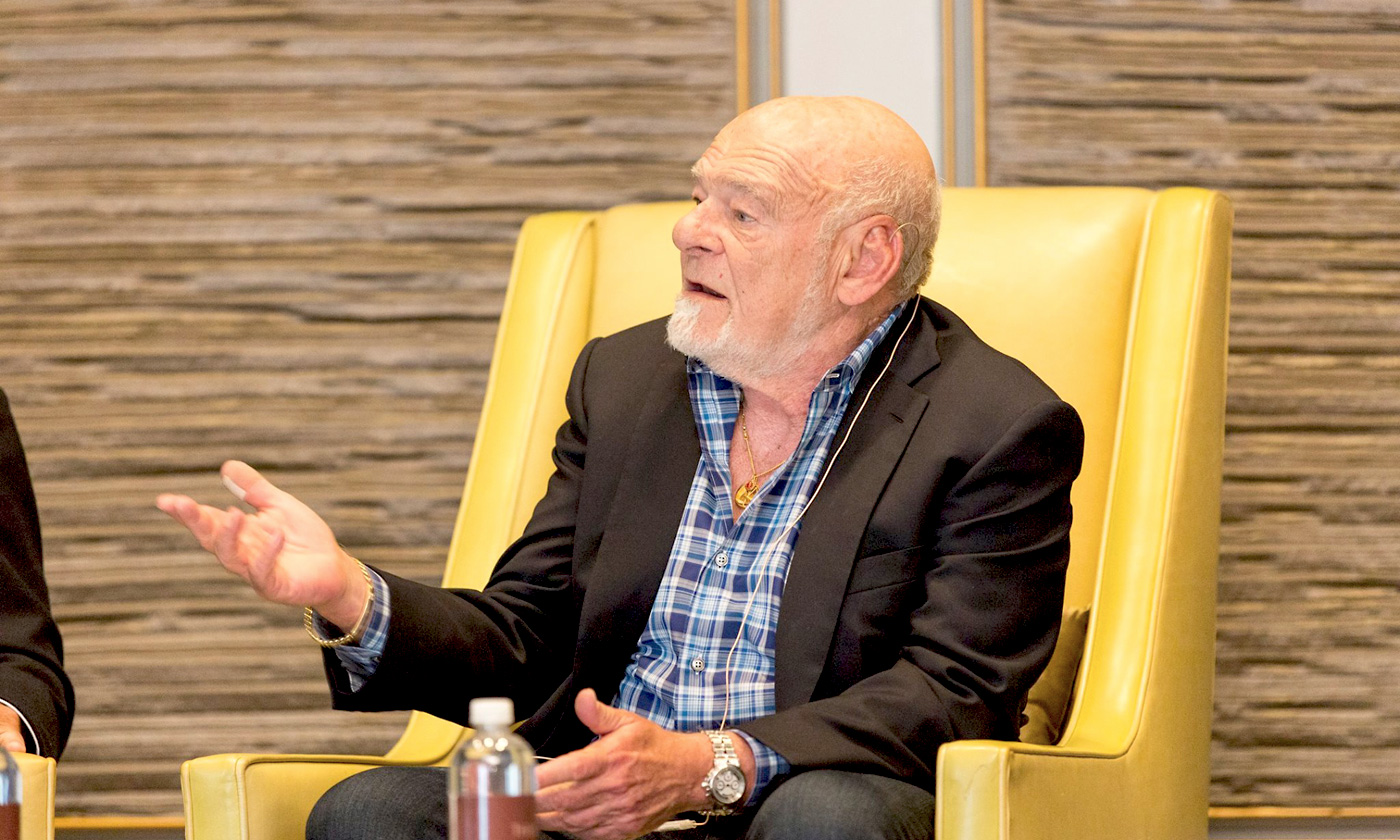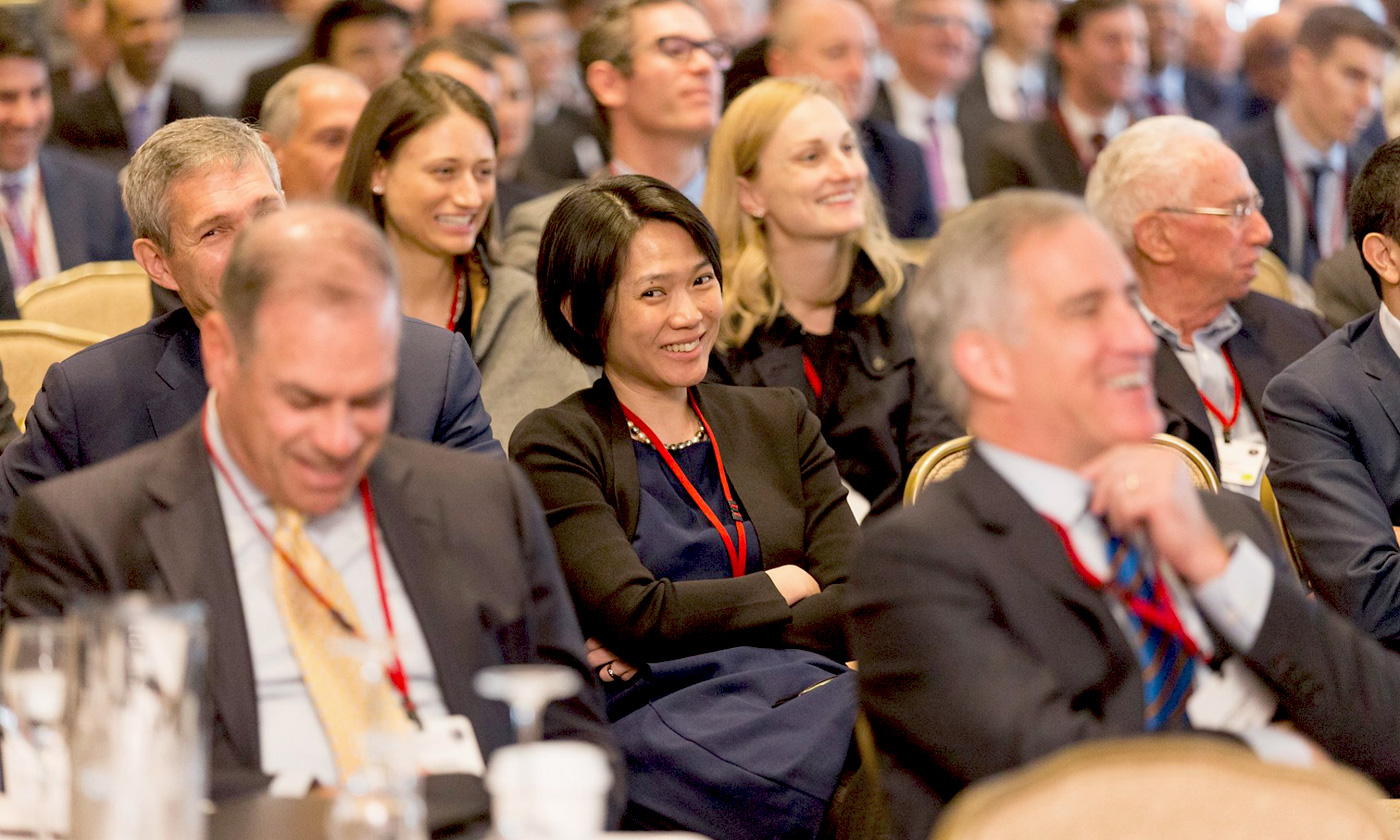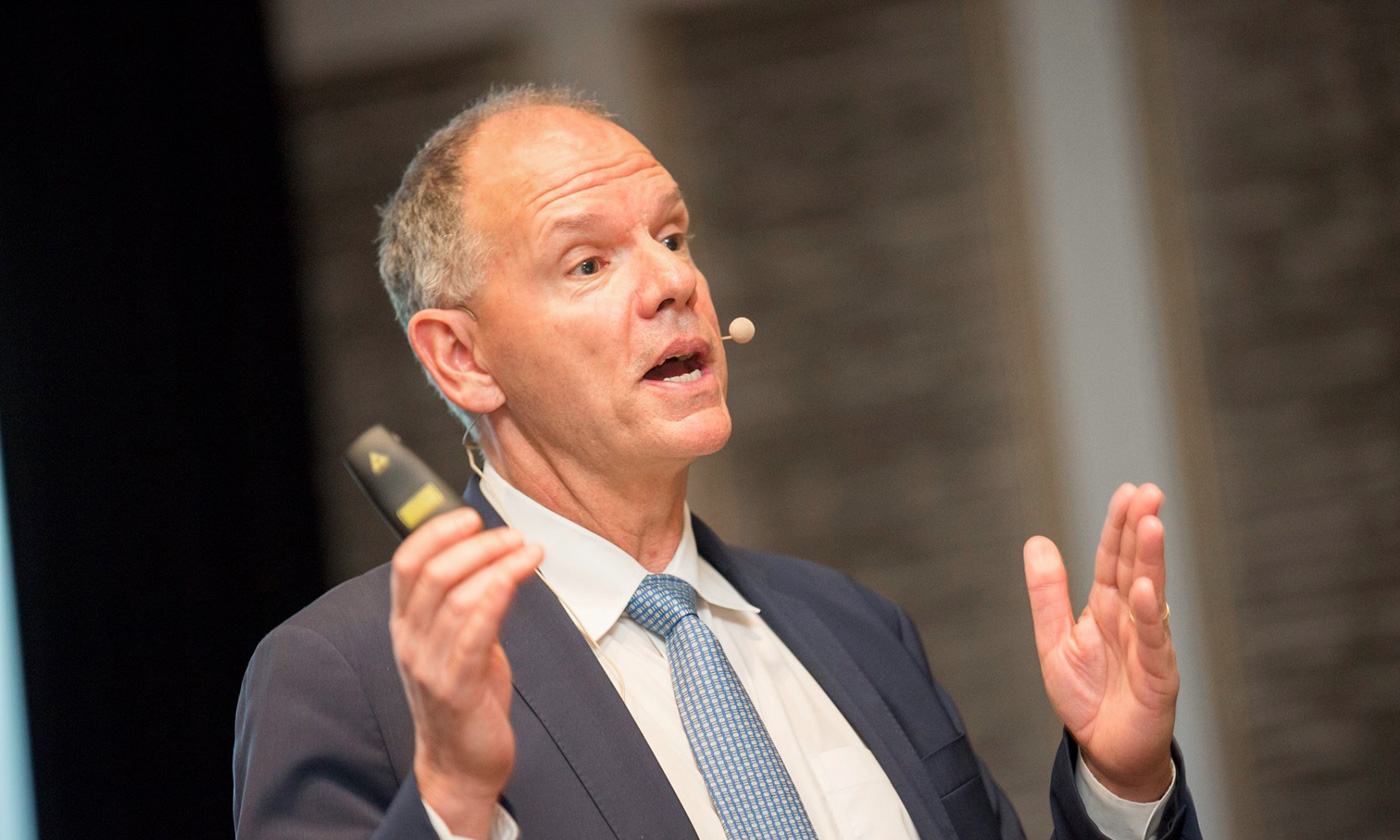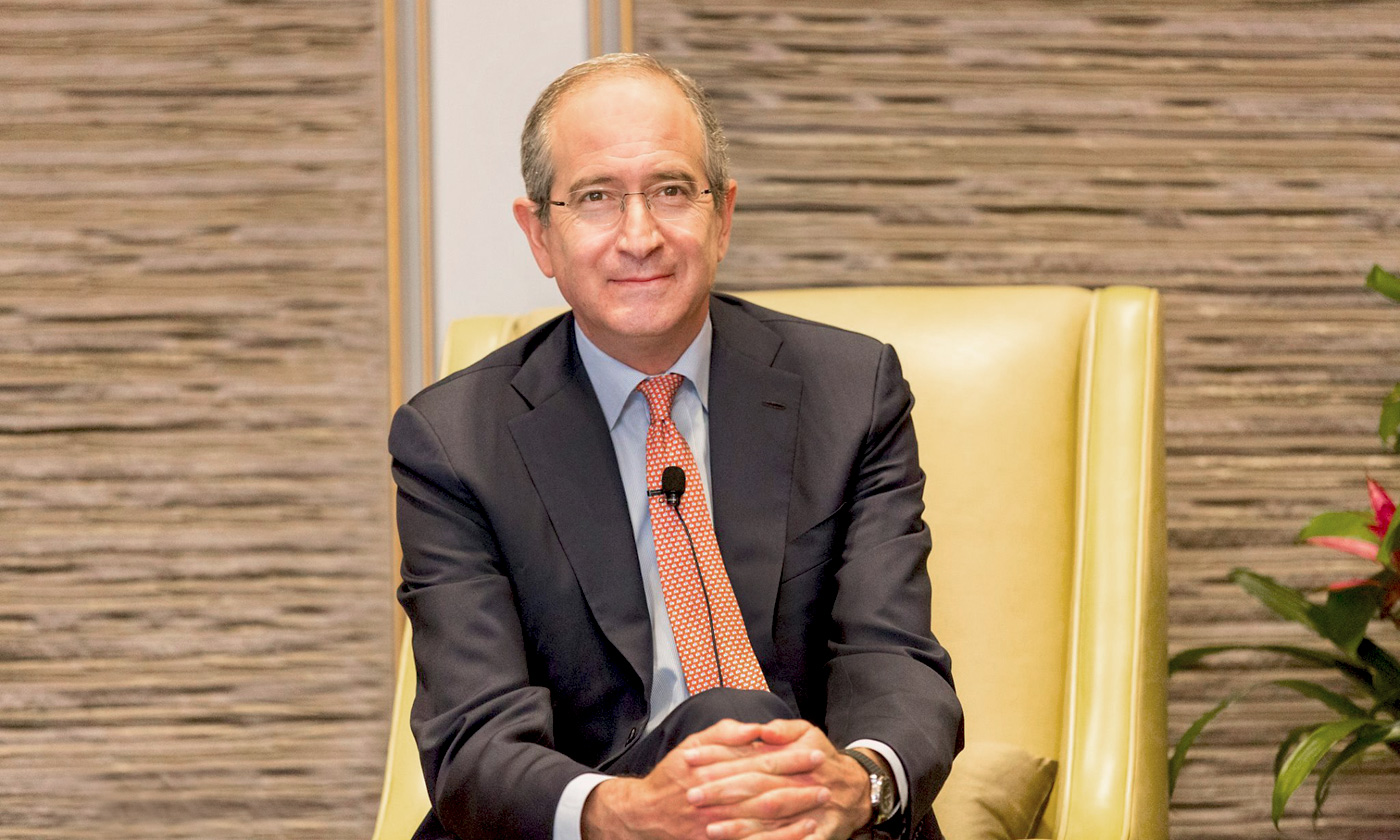2017 Spring Members’ Meeting Summary
April 27, 2017
Zell/Lurie’s 2017 Spring Members’ Meeting opened with welcoming remarks from Spencer B. Haber, Chief Executive Officer, H/2 Capital Partners LLC; Chair, Advisory Board, Zell/Lurie Real Estate Center at the Wharton School, and Joe Gyourko, Nancy A. Nasher and David J. Haemisegger Director, Zell/Lurie Real Estate Center at the Wharton School.
Gyourko and Haber welcomed guests to the Spring Members’ Meeting with a brief State-of-the-Center address. It was reported that Wharton graduates are seeing somewhat weaker job placement. Employers with open positions can view student resumes.
Panel 1
Wharton Faculty on the Economy, Public Policy and Political Risk
The first panel, “Wharton Faculty on the Economy, Public Policy and Political Risk,” was moderated by Joe Gyourko.
Panelists were Mauro Guillén, Anthony L. Davis Director of the Lauder Institute and Zandman Professor of International Management at the Wharton School; and Kent Smetters, Boettner Chair Professor of Business Economics and Public Policy at the Wharton School and Faculty Director, Penn Wharton Public Policy Initiative.
The faculty first discussed the areas of global political risk in the next two or three years. Mauro Guillén put Europe at the top of the list, followed by Asia. “These areas of the world have too many moving parts with unknown election outcomes.” He added that currencies would pose the next risk, predicting that the Euro will disappear and that there will be “pressure on the dollar.” The third dicey area of global risk involves general turmoil worldwide: ethnic and religious tensions, terrorism and politics.
Kent Smetters considers risk to come from the fact that the U.S. is running big trade deficits and trying to reduce trade by closing its borders. “Reducing trade won’t fundamentally impact deficits. We are consuming a lot more than we’re producing and running national deficits,” he said … “Bigger federal debt means you naturally run a trade deficit. It is an internal problem. Don’t blame China and so forth.”
The conversation turned to healthcare and the failure of the Trump Administration to replace the Affordable Care Act. Smetters felt the mandate wasn’t strong enough for Obamacare to thrive and wasn’t strong enough for its replacement, the American Health Care Act, either. In the long run, he does not believe there will be any substantial change.
Joe Gyourko asked the two panelists about immigration. “Healthcare affects all employers in this room. Immigration is another. We are in the housing business, and immigrants all live somewhere, creating a demand. What will happen with immigration reform or policy?” he asked.
“When you legalize immigration, unemployment goes up, not down, because as the undocumented begin to qualify for other benefits, they can extend their job search and unemployment goes up,” Smetters replied.
Guillén raised the topic of the proposed border wall between the U.S. and Mexico. “A lot of tourists/immigrants would like apartments in Miami and New York. If you make it harder for people to come, make them think they are not welcome, they will buy elsewhere,” he said. “Build a wall along the Mexico/Guatemala border instead, where the problem is.”
The group agreed that America needs immigrants at the lower end of the socio-economic scale to do jobs Americans do not want to do and, at the higher end, to work in innovation.
“Every country in the world envies the U.S. because it is a magnet for immigrants, both at the low end and high end. The people in the middle who voted for Trump are wrong. They are being displaced by technology, not immigrants,” he said.
“Agreed. Technology is the problem, not trade,” said Gyourko. “Our population growth in the past year is the lowest since the Great Depression. Just the threat of immigration enforcement is lowering it. We don’t even need a wall.”
The conversation turned to President Trump’s recent tax reform ideas, and how they might be paid for. Smetters said that this “plan” will produce enormous deficits over time. The panel ended with a consensus about regulation; that the U.S. over-regulated on the business side, and under-regulated in terms of consumer protection.
Panel 2
Remaking the Real Estate Company and Industry – Can We Adapt and Thrive in a New World?
The second panel, “Remaking the Real Estate Company and Industry – Can We Adapt and Thrive in a New World?” was moderated by Asuka Nakahara, Associate Director, Zell/Lurie Real Estate Center at the Wharton School.
Panelists were Chandra Dhandapani, Chief Technology Officer, CBRE; MaryAnne Gilmartin, President & CEO, Forest City Ratner Companies; Vaibhav Gujral, Associate Partner, McKinsey & Company; and Mike Maples, Jr., Managing Partner, Floodgate.
This panel opened with the group agreeing that real estate is far behind the times, technologically speaking. Mike Maples, Jr. asserted that better use of technology across the board would create “transformational changes” in real estate. Chandra Dhandapani agreed and added, “Commercial real estate is like going back in a time warp. There is tremendous opportunity to apply technology across all areas of the field and it will help us all do our jobs better.”
Vaibhav Gujral added that in the last two or three years, all conversations about client strategy have revolved around technology and data. “Data is a commodity,” he said. “A lot of data exists, and we need to find novel ways to integrate it, to develop insights and strategies.”
“It is not always obvious how data analytics and tech apply to what we do. What has changed?” Asuka Nakahara asked MaryAnne Gilmartin.
Gilmartin called her business, the construction industry, “an industry that time has left behind … as far as technology and innovation.” Gilmartin described a building her company recently built next to the Barclay Center in Brooklyn. She said this will be the tallest modular building in the world, and is a good example of “how technology can liberate the construction industry.”
Maples, Jr. stressed the importance for companies to capture events as they occur and file them in databases. “The cost to store information has become zero, and smart people have realized that if it’s zero, you can capture everything,” he said. “From the ground up, be data savvy and make sure all employees are data literate. It will be fundamental to your success. In real estate, capture every event in the building and apply it to providing value to customers.”
The group agreed that the compilation of data is beneficial and has implications, but questioned who would bring in the changes.
In his experience, Maples Jr. said a lot of ideas come from outside sources and create opportunities for those ready to embrace them. Dhandapani added that it is not just the data collection that matters. “You can collect all the data you want, but the value lives in human insight and knowledge.”
Nakahara wondered how long it will be before we wake up and see a large change, citing Airbnb and WeWork. “There are obvious things changing that we understand and accept. Others we scoff at.”
Maples, Jr. and Gilmartin concurred that this large change will happen in five years or less.
“Networks and data are all you need to transform from owning a physical thing, to getting access to it when you need it,” said Maples, Jr. “The internet allows you to get access anytime, anywhere, and we’re seeing it more and more. I do not see that trend stopping. The value of having what you want when you want it, on your terms, is compelling.”
Gujral cautioned against generalizing too much. “It is important to distinguish that there are things that will change and things that will not. Real estate is a scarce asset and its value is significantly more. Use of space is changing, but the scarcest asset is real estate. Those who will derive the greatest value understand how technology can help them be more efficient.”
Dhandapani suggested that the world changes on a continuum and, Gilmartin added, we have to know how to meet what clients and workers want. Dhandapani added that working back from what the clients’ changing needs are and figuring out how to deliver that in a more technologically enabled way creates a positive cycle. “It is a never-ending cycle once it gets going. The experience for the clients will drive business,” she said.
Keynote Speaker · Brian L. Roberts
The Future of Media and Technology: A Conversation with Brian L. Roberts, Chairman and CEO, Comcast Corporation, and Asuka Nakahara
“The Future of Media and Technology: A Conversation with Brian L. Roberts, Chairman and CEO, Comcast Corporation, and Asuka Nakahara”
Asuka Nakahara introduced Brian L. Roberts and asked him to discuss his background, the history of Comcast and his take on the future of media and technology in the communication industry.
Roberts described the family business that began in 1963 when his father, an entrepreneur, decided to go into the cable business. The elder Roberts loved the idea of “build it and they will come” and knew that people loved television. He envisioned a recurring revenue business and figured out how to make it work.
Three major events changed the trajectory of the company: Bill Gates’ 1997 investment in Comcast, the company’s 2001 deal with AT&T and its 2011 deal with NBC. Roberts explained in detail how each deal was accomplished and how each one moved the company forward to its position in the industry today as the largest broadcasting and cable TV company in the world.
Roberts has managed the growth of Comcast by recognizing that it would need to continually change. “The one thing that is a constant is change, and technological change is the fastest,” he said. “We decided to redesign Comcast from a cable company to something else. It is daunting and exhilarating at the same time. We took our cable product and became a content provider. You have to serve the consumer, and that is how you win. We had to decide we were a technology company and all that means. We’re proud of it and on we go.”
Roberts then talked about Comcast’s real estate holdings, including 30 Rock in New York City and the flagship building in Philadelphia, with the second building nearly completed. He showed a video rendering of what the building will look like when completed. The Comcast Technology Center will be a tech center in a high rise: innovative, efficient, and showcasing the Four Seasons Hotel at the top of the tower. He said it will be the first technology center on the East Coast in an urban market.
When Nakahara asked Roberts to predict the future of media and technology, he explained that they are investing in content and ways to create the world’s best broadband, moving toward personalizing the process and content. Otherwise, he said, “Who really knows what the future holds? We just need to figure out how to remain relevant.”
Nakahara finished by asking, “What advice can you give this group? You made your company innovative in an industry that was not seen that way. How can we be more forward-thinking and innovative in real estate?”
“It is a mindset,” said Roberts. “Figure out how you can be different. It is an attitude. We have stayed disciplined, but yet managed to evolve.”
Panel 3
The $19 Trillion Question: Playing Offense and Defense over the Next Cycle
Panel three, “The $19 Trillion Question: Playing Offense and Defense over the Next Cycle,” was moderated by Spencer B. Haber. Panelists were Steve Hason, Managing Director, Co-Head Americas Real Estate, APG Asset Management US, Inc.; Dennis G. Lopez, Global Chief Investment Officer of AXA IM, Real Assets and Neil Cunningham, Senior Vice President, Global Head of Real Estate and Natural Resources, PSP Investments.
Spencer B. Haber opened the panel by asking the panelists, “Is there a new normal? Are we at the end of an unprecedented easing cycle in the U.S.? How much is the past prologue to the future?”
In general, the group agreed that one has to know how much of the news today is just noise and how much may be on target. Neil Cunningham said that separating the short-term noise from the long-term trends is hard to do. “There is a lot of short-term noise today that does not take away from the long-term trends of tech, demographics, emerging middle class, etc.”
Steve Hason agreed with the long-term approach. “Real assets are not judged day-to-day or month-to-month. We used to think of what countries to invest in and now we consider what cities. The U.S. went from a country that had more grandkids than grandparents, now it is reversed. So do we invest in student housing, or switch to senior housing?”
Dennis Lopez added, “We think the world is in pretty good shape right now from a macro-economic standard. We think a lot of the issues from the great financial crisis have been dealt with, but geopolitical events concern us.”
Strategies to ensure the safety of their businesses, regardless of world events, were discussed. Their assessment was that the focus should be on unstoppable long-term trends, and the necessity of doing the research to figure out how to construct a solid, long-term portfolio.
Haber continued the technology discussion by asking how panelists factor obsolescence into their valuations.
Cunningham’s suggestion was to compare older and newer product within a market. “Something that is old is okay as long as it is flexible, with no interior walls, lots of light and air, for example.” He stressed that, many times, paying top dollar for fortress assets is not smart because they are inflexible.
“Keep investing in assets, keep up with the trends, pivot to keep up with where clients want to be, and reinvest in your assets. That’s critical in today’s environment,” added Hason.
The panelists agreed that their scale and volume is an asset for them. Once they get networking and data sharing figured out, which is a challenge, their large size is an advantage.
“Scale gives certainty,” Hason said. Alternatives do too, Lopez added, saying he has moved into office, retail, hotels, data centers, student housing, etc. “The common theme is that real estate needs a good operator or it does not have much value, and with technology moving so fast, we want to be part of the operating company so we know where things are going.”
Cunningham disagreed, claiming that being involved with the operator means getting involved in the human resources aspect. He is trying to avoid that, saying that good partnerships, which he cultivates, are key.
Haber closed the panel by asking the panelists to speculate what might be in their portfolios in the next five to ten years that is not there now.
Lopez answered that he will only be in China, no other emerging markets. “China is going to be such a big factor in the world that you can’t ignore it.”
Cunningham replied that he will have less in retail, and more in mixed use; more multi-family and more seniors. “We are already in China, which is literally too big to ignore, and India is on our radar screen. Even though it’s hard to get things done there, we have to be there.”
Hason said he will continue to look at emerging markets, but there are other places to consider.
Panel 4
Economic Growth and Real Estate Markets Going Forward
The last panel of the day, “Economic Growth and Real Estate Markets Going Forward,” was a wide-ranging discussion with two of the world’s leading international investors: Eyal Ofer, Chairman, Ofer Global and Global Holdings Group, and Samuel Zell, Chairman, Equity Group Investments. It was moderated by Joe Gyourko.
“These men are doing business in the age of heightened geopolitical risk. They go where opportunity presents good risk-adjusted return,” Gyourko began. “Is there really a heightened risk or is this just noise?”
Sam Zell answered, “There is significantly greater risk around the world today than at any time I can remember. And in the U.S., we have had a monumental election and have a new and different president. I think his choices and basic decision-making have been pretty good, but his execution has left a lot to be desired. He has created a lot of instability by appearing to be flippant, which is a political risk. In the current environment, with a divided country, I could imagine that we could flip too far in one direction or another.”
The panelists agreed that, in countries where the rule of law predominates, and there is a degree of predictability, then any risk is not out of line. “But when you wake up one day and there is a new rule, then the risk escalates,” said Zell.
Gyourko asked them to elaborate on the financial implications that Brexit could have on Europe, asking, “How will that play out in real estate investments, short-term and long-term?”
The consensus was that it is too soon to tell. The group agreed that the English language plays a dominant role in international finance that is not easy to replace, but the impact just cannot be clearly identified yet.
The conversation shifted to the mood in the United States regarding free trade and immigration. Zell’s opinion was that the NAFTA agreement was fifty percent foreign policy and fifty percent free trade. “NAFTA was to stop illegal immigration. We called it a trade agreement because foreign policy doesn’t sell.”
As for Mexico, Zell believes that any border wall will have “relatively little impact on Mexico. The country is booming. We each provide the other with goods and services and there is significant interdependence. Free trade has been successful because it works. As for immigration, we need to adjust the rules to attract the people we want to attract.”
Gyourko shifted to the United States’ infrastructure and regulatory issues. “Do you see the U.S. government playing a useful role here?” he asked.
“The average timeframe in an infrastructure project in the U.S. is about ten years from start to finish,” said Zell. “This is hardly a stimulator scenario. How do we overcome the regulatory constraints? I am hopeful this administration can, but if they cannot, there will be no infrastructure program. At some point, someone is going to have to ask how we accomplish what we need to get done. The regulatory morass we’ve created … Society is stuck.”
“I feel comfortable currently about the U.S., in general,” added Ofer. “The level of confidence has improved dramatically, which is causing momentum. More people feel that the economy is sounder and are willing to put money in play.”
Gyourko then asked Zell and Ofer how difficult they found it to locate anything substantial at a bargain in the current market. “Things look fully priced,” he said. “How do you identify opportunities in a world where there is a lot of capital?”
Supply is actually being added, Zell said. “We will build 380,000 apartments this year in the U.S. You have not seen that since the 1980’s. Hotel markets are looking at a ten to twenty percent increase in the number of rooms.”
“A lot of money floating around impacts interest rates. The risk-free rate is not going up fast and is not likely to in the near term. Risk-adjusted rates are likely to move up,” Zell added, and Ofer agreed.
The men closed the panel in agreement that the sooner technology is adopted and accepted, the better. “Technology impacts the way real estate is run and marketed daily,” said Zell.
“The quicker we adapt to changing ways, the longer we survive,” added Ofer. “It will change our lives forever. It is not reversible anymore.”
Next Members’ Meeting
- 2017 Fall Members’ Meeting
Friday, October 27, 2017
Posted April 2017







